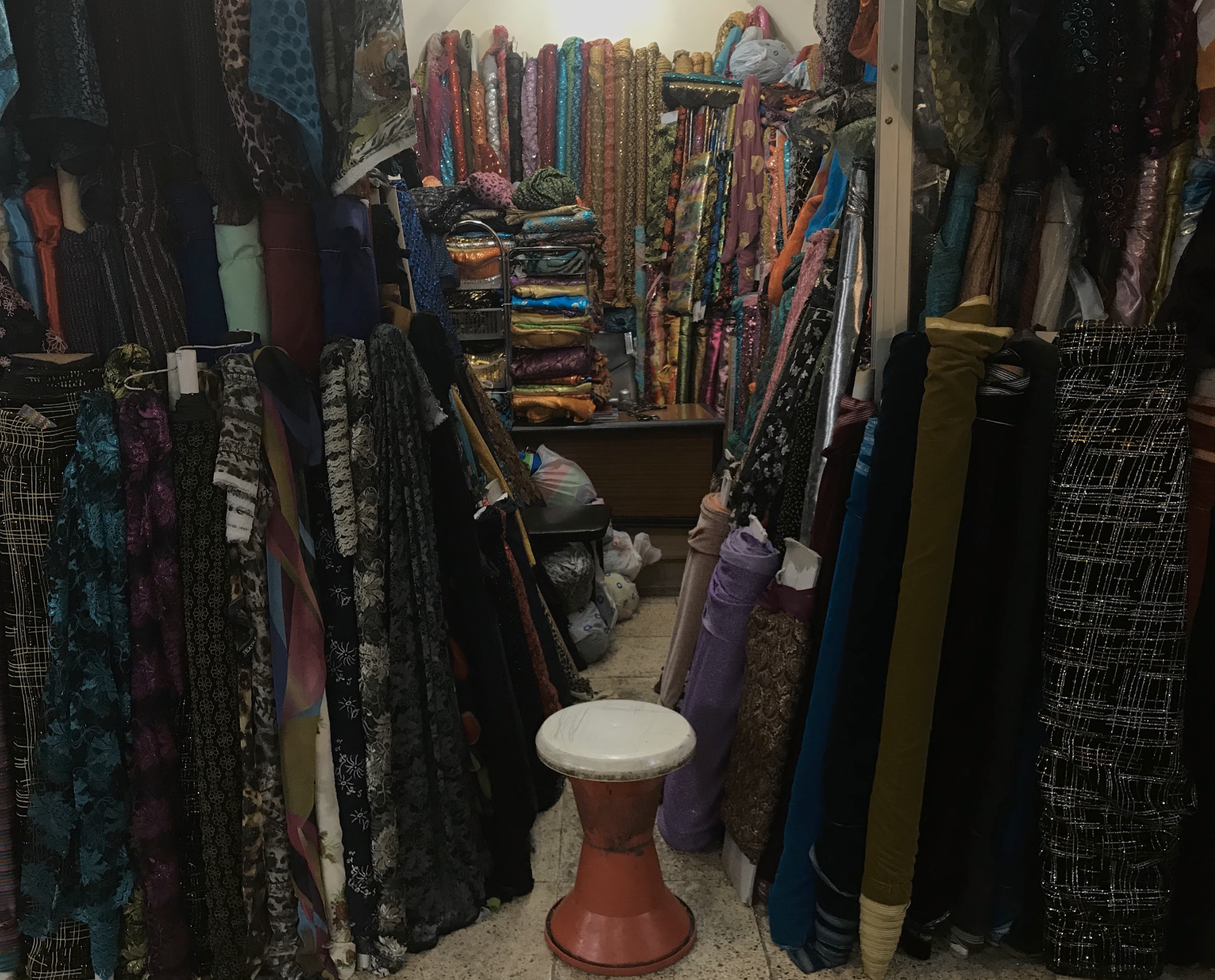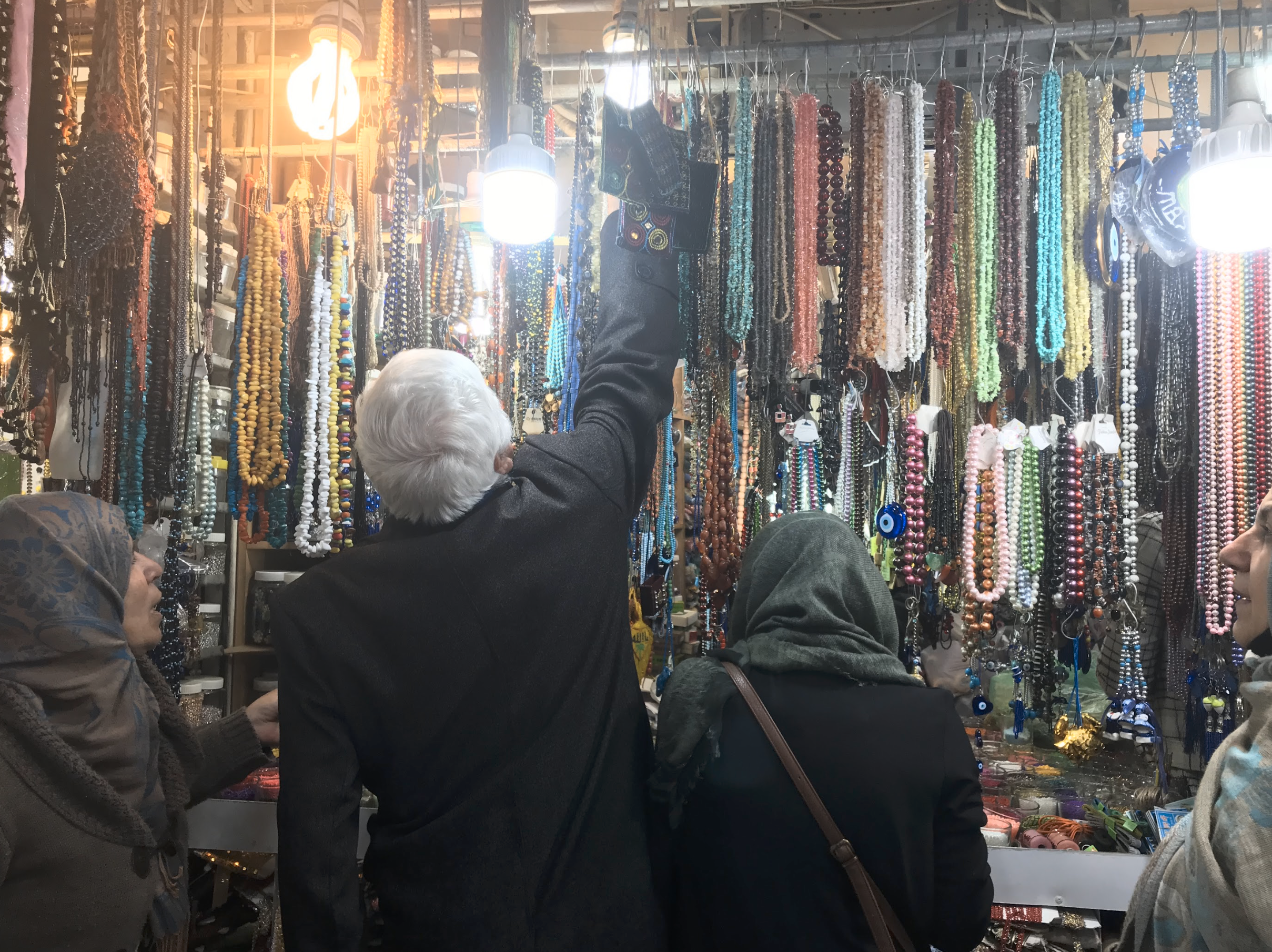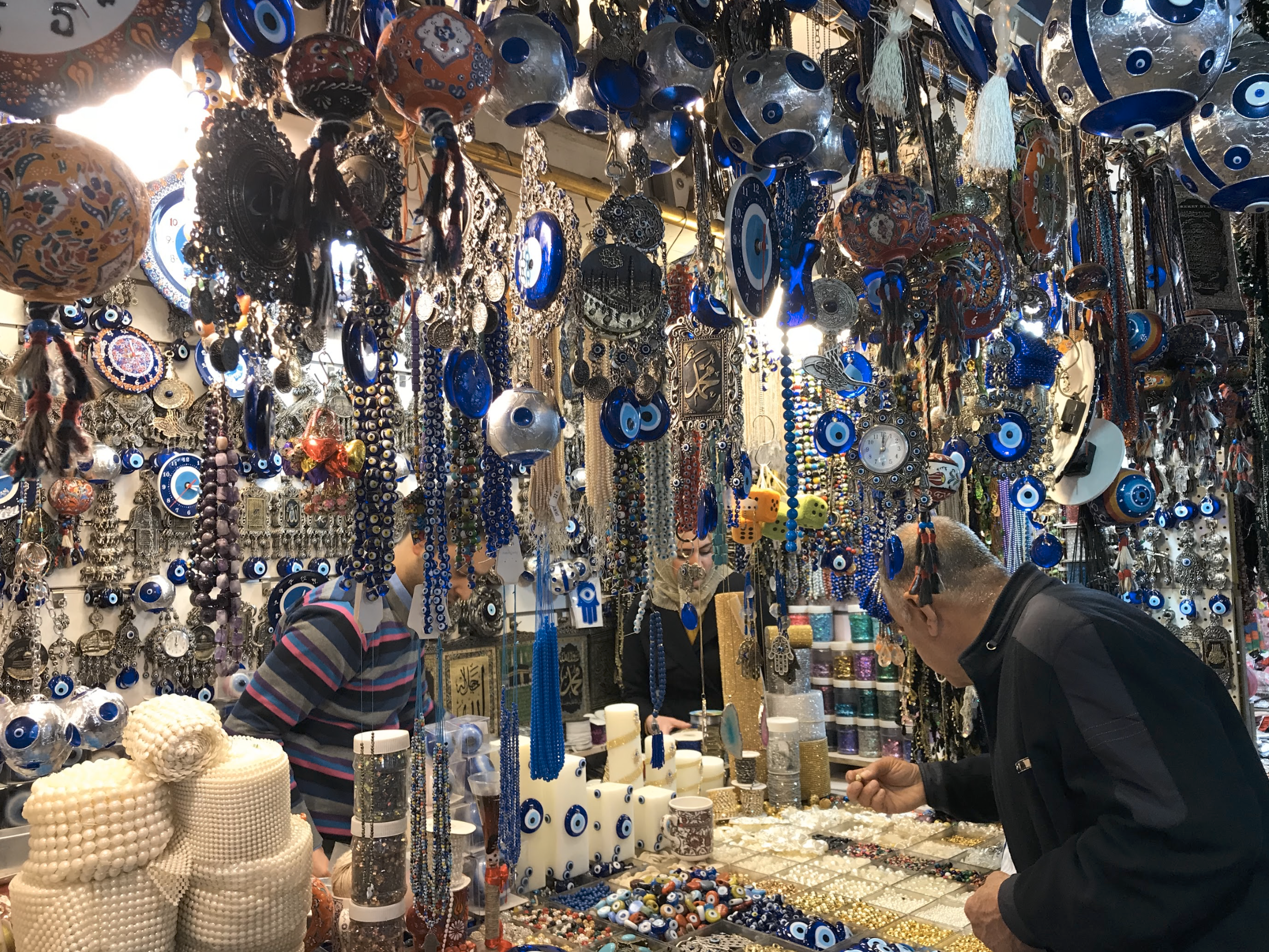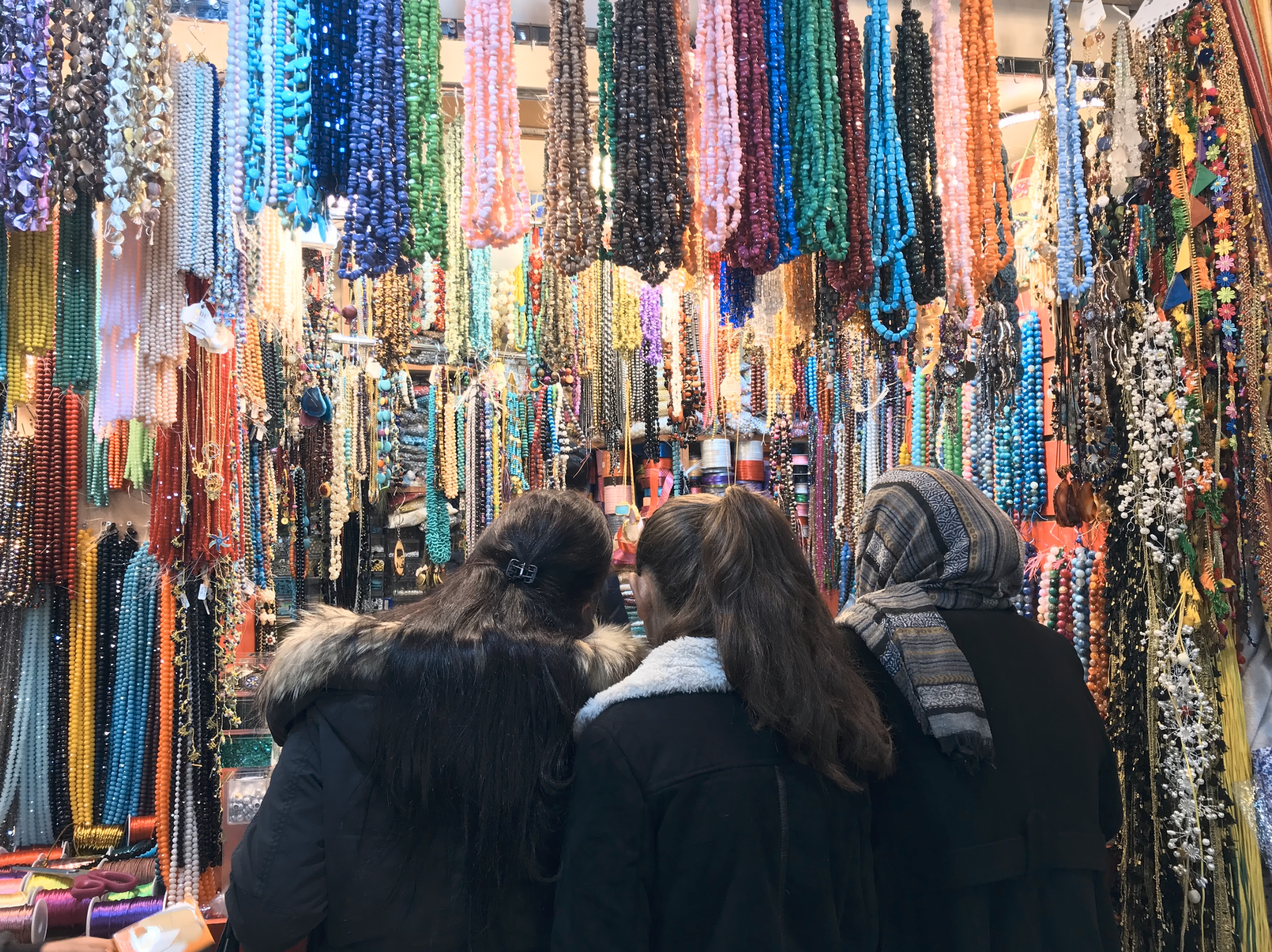One of the oldest business centers in the Kurdistan Region, Qaisary Naqib (the Qaisary) stands as a testament to time, preserving its historical significance in the face of modernization. Established in 1900 by Sheikh Mustafa Al Naqib, this bazaar retains its original character and charm. This article delves into the rich history of the Qaisary, examining its architectural marvels, role as a hub for business and culture, and the challenges it faces in the modern era. Join us on a retrospective journey, inviting you to stroll through the enchanting alleys of the Qaisary, immersed in the rich history and timeless charm of this historic bazaar.

Surviving the forces of history
During Sheikh Mustafa’s era, the Qaisary was primarily populated by Jews of Kurdistan, rather than Muslims. In early 1950s, when the Jews were repatriated to Palestine, Muslims gradually took their place. The Qaisary survived numerous calamities, evident from the damage observed and recounted by people recalling the area’s history. “During the World War II it faced bombardments, was ruined, and later rebuilt,” says Omer Muhammed Mustafa, one of the elderly shopkeepers. In 1957, one of the most severe floods in Sulaymaniyah damaged many parts of the Qaisary. At that time, civilians, including many young people, teachers, and public figures, provided financial assistance to those affected. In 1988, during the Ba’ath regime, it was set ablaze and subsequently rebuilt entirely. “The government did not take responsibility; we took charge and revitalized the place,” Mustafa remarks. “We suffered significant losses, starting from scratch after reaching ground zero.”

Architectural style
The construction of the building involved a significant number of workers and architects, the majority of whom hailed from Iran. More precisely, they came from the Kurdish cities of Sna (Sanandaj) and Kermanshah, chosen for their rich architectural heritage. The Qaisary’s layout mirrors that of the bazaars used in Eastern Kurdistan (northwestern Iran). People used to access the building through five main wooden gates, with a sixth entrance recently added. Despite the modifications, the bazaar has retained its ancient architectural style.
The Qaisary contains a large courtyard, known as the Khan, which is surrounded by numerous shops. Donkeys were historically used to transport products to the Qaisary through the Khan. After the Qaisary was set ablaze in 1988, tractors entered through the Khan to remove the rubble. Today, there is a pool at the center of the Khan, topped by a dome that enhances the Qaisary’s aesthetic appeal.
The dome underwent reconstruction in 2012 when it was on the verge of collapsing onto the shops. The government contacted German, Turkish, and Iranian companies for the restoration, which insisted on closing the Qaisary during the process, citing the necessity of demolishing and then rebuilding the dome. However, shopkeepers opposed this, as their livelihoods depended on their businesses.

The College of Business and the House of People
“The College of Business” is the name by which locals refer to the Qaisary, since individuals have long learned the art of business through working there. Products sold at the bazaar have historically originated from Baghdad, Syria, and Iran. In the past, merchants personally traveled to these regions, bringing the latest products to shopkeepers in the Qaisary. After the 1940s, the bazaar became a popular spot for buying herbal medicine, with soap, sugar, tea, and fabric other important products. Decorative items have remained a key commodity. Initially, these products were scarce, but gradually in the 1960s, as people’s awareness expanded globally, the sale of decorative items began, and the bazaar gradually evolved.
“Kurdistan Tea” was once a successful brand at the bazaar. Hajy Qadir Jabar, one of the oldest shopkeepers in the Qaisary, owned the brand for a period. In 1963, a mob attacked Qadir’s shop and physically harmed him due to his ownership of the brand. Subsequently, the brand disappeared from the market.
Notably, after the revolution of July 14, 1958, when the bazaar started importing women’s goods, women began visiting the bazaar. Haji Salih Qandil and Jabar Fattah were the first two individuals in Sulaymaniyah with a shop dedicated to women’s cosmetics and jewelry items. “They used to call the Qaisary the ‘women’s compass’ because their shopping wouldn’t be considered complete unless they visited the Qaisary,” Haji Qadir explains.

The city’s beating heart
Today, there are four shopkeepers operating shops in Qaisary Naqib, who also happen to be the oldest: Omer Muhammed Mustafa, Abass Sharafy, Jalal Fatah, and Qala Rash. The tradition of the bazaar has been for shopkeepers to pass down their shops to their sons, ensuring that sons follow in their fathers’ footsteps, thereby preserving the business and cultural roots.
“I have worked at the Qaisary since 1950, when I was around six or seven years old,” Mustafa shares. “I worked with my brothers in their shop during the summer as an apprentice. I’ve had my own shop since 1970. Due to my age, I have retired and handed it over to my son. Those who worked here before have passed away, and their sons and grandsons have taken their place.”
Time has changed the people who make the Qaisary their home and give it vibrancy in other ways. For instance, the porter Darwesh Saeed, known as Uncle Inshallah, was a beloved character always wandering around the Qaisary selling loofah and working for the shopkeepers. He passed away in the 1980s.
Kurdish people are renowned for their hospitality, which is reflected in the social interactions between shopkeepers and customers within the Qaisary. The people in the Qaisary are not just coworkers; they are friends in both deed and need. A sense of compassion and trust has developed among shopkeepers, who spend 10 to 11 hours a day there, and between shopkeepers and customers.
“The shops in the Qaisary don’t have doors,” Mustafa notes. “People use a curtain to cover their goods or place a chair at the entrance to close the shop when they go to lunch or head home. At the end of the day, only one guard watches over the Qaisary,” says Mustafa. In addition to working together, shopkeepers used to have picnics together in the springtime.

Popular memory
“I was a child when my mother used to bring me here to buy things like beads and bracelets – those tiny beads that delight kids,” recalls Munira Mohammed, a tailor who regularly visits the Qaisary. “‘It’s the oldest bazaar, and there are beautiful things in it. We’ll go now and buy you a bracelet, a necklace,’ my mother used to tell me. It’s one of my oldest memories.”
The Qaisary has preserved itself in the minds and hearts of the people. They learn about it from their parents, who take them there, and now they, in turn, take their own children.
“As a tailor, when I need sewing materials, I come here,” says Munira. “There are times when I visit twice a week, and sometimes only once a week. But it is definite that I visit at least once a week. To me, this place has a timeless feeling that never goes away.
“When I enter the Qaisary, it is the smell of the past that attracts me – the smell of cloves and herbal medicine. It reminds me of my childhood. This place never changes. It’s true that new products are coming in, new things and products according to modern demand, but the market never loses its historic feel.”
Kadija Khan, an elderly woman in her seventies wearing an abaya, browses the shops. “Qaisary Naqib has existed for a long time. I was a child when I first came here. By God, I remember visiting this place when the Jews still worked her,” she says with an expression of delight.
“Sheikh Jalal was a tailor; he used to sew kawa, a kind of traditional Kurdish women’s dress, for me. That was his shop right there. But there are no tailors here anymore.”
Anyone you talk to nowadays about their relationship with the Qaisary will explain their connection to the bazaar with a deep sigh from the soul.
“I used to work at the smugglers bazaar – that’s what they used to call the bazaar neighboring the Qaisary back then,” explains Dana Ismaeel, a regular customer. “Our house was in Chwar Bakh. When I walked past the Qaisary on my way to my workplace, tiny beads caught my eyes. In the evenings, when returning home early, I used to go through there just a quick visit. I like it. It is an old place. It contains stuff that I like because I love practicing handworks with beads, such as bracelets.”

Modernization
Through changing times, the Qaisary has endured. However, the big malls and companies are taking business from the bazaar. Nowadays there are numerous options available, and people can easily buy their necessities at the newer mini bazaars and malls closest to them. As a result, the old bazaar’s customer base is shrinking.
The Qaisary is making efforts to align itself with the demands of the modern world to survive, which includes importing modern products. “I think that, in earlier times, more people used to come, and now not many people care to visit because people can buy their products elsewhere,” says Munira.
However, prices are much cheaper at the bazaar than anywhere else, which is why some customers always prefer to shop there.
“Things are cheap here,” says Haseeba Saeed, a regular customer. “They are sold at wholesale prices. For example, if you go to Daboka bazaar, the same item that you buy for 1,000 Iraqi dinars here is more likely to cost you 3,000 dinars there. For someone who is not very rich, this place is better than anywhere; I buy my perfumes here.”
However, it is clear that the younger generations are not visiting the bazaar. This raise concerns that business might cease at the Qaisary soon, as the youth are finding newer and faster ways of shopping that suit their tastes and desires. But for the previous generation, visiting the place holds much more significance.
“I still go there. Its oldness takes me back,” says Ismaeel.
Haji Ibrahim, who established his shop in the Qaisary in 1972, laments, “The Qaisary once catered to wholesale transactions with shops in Darbandikhan and beyond. However, business has dwindled by 50% due to the proliferation of supermarkets and companies offering delivery services, diverting customers away from traditional storefronts.” Products go to the people; the people don’t come to the product anymore. They rely on new companies and markets more than the Qaisary.”
Despite these challenges, many loyal visitors like Ismaeel and Haji Ibrahim still frequent the Qaisary, valuing its enduring charm and historical ambiance.
Savan Abdulrahman Ahmed is the editor-in-chief at DidiMn, a Kurdish cultural website. Concurrently, she is engaged in a research project on the origins of masculinity in her role as a research assistant at the American University in Iraq, Sulaymaniyah, and also collaborating on this project with the London School of Economics (LSE).